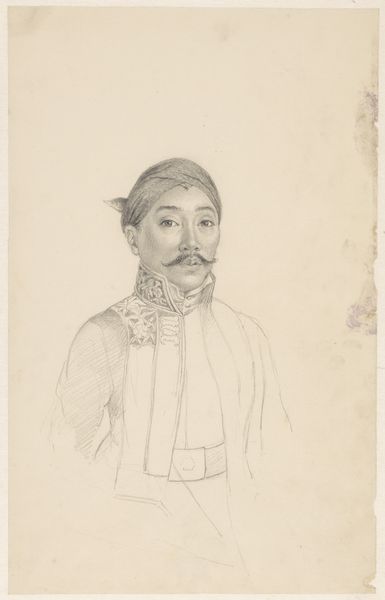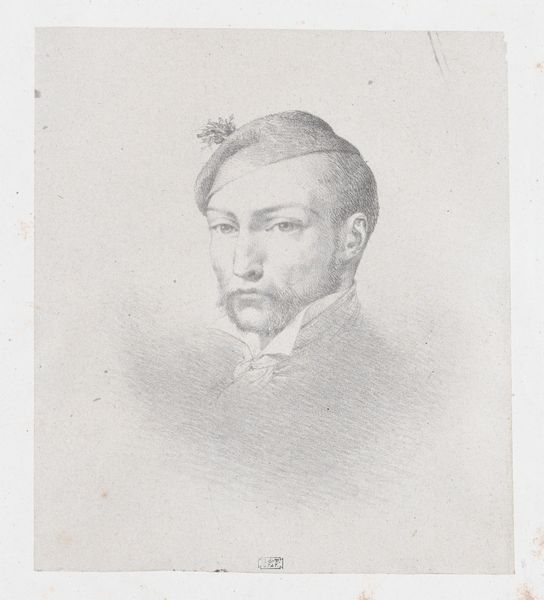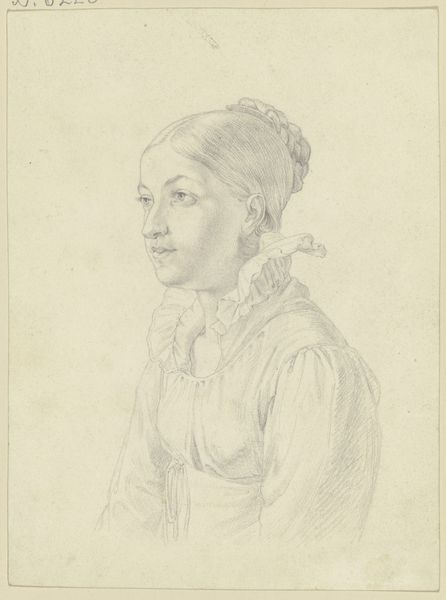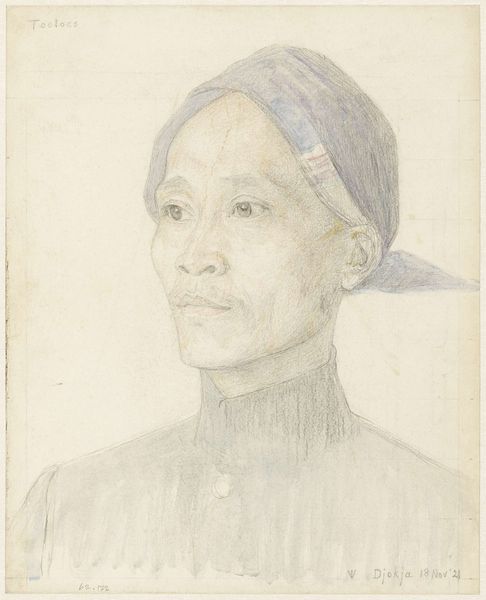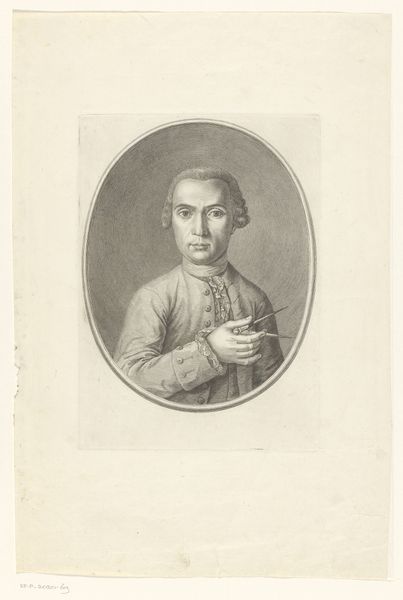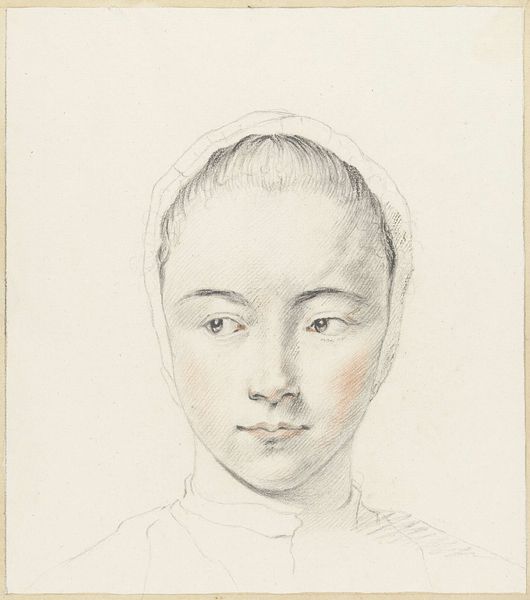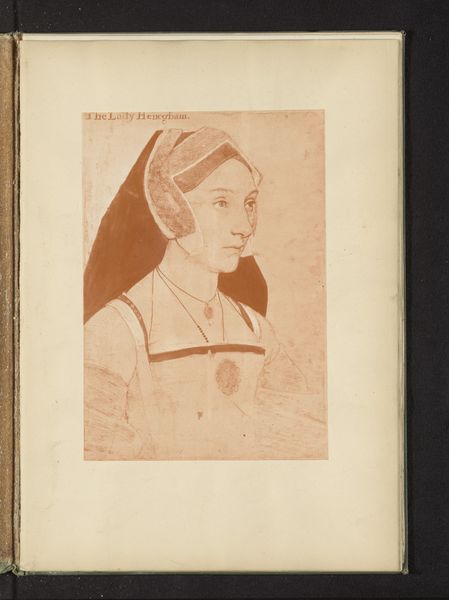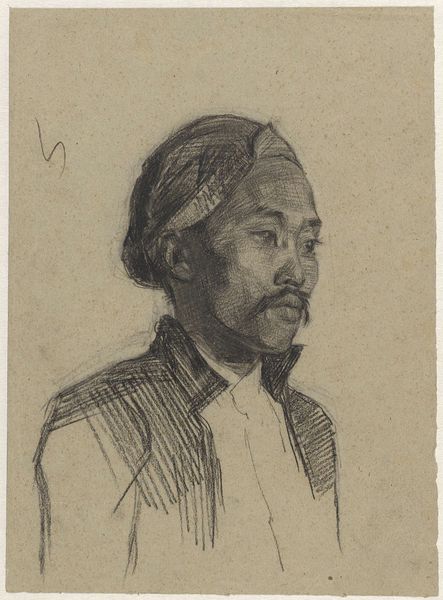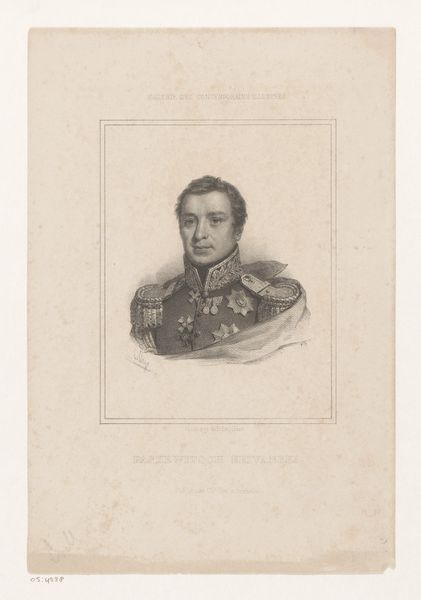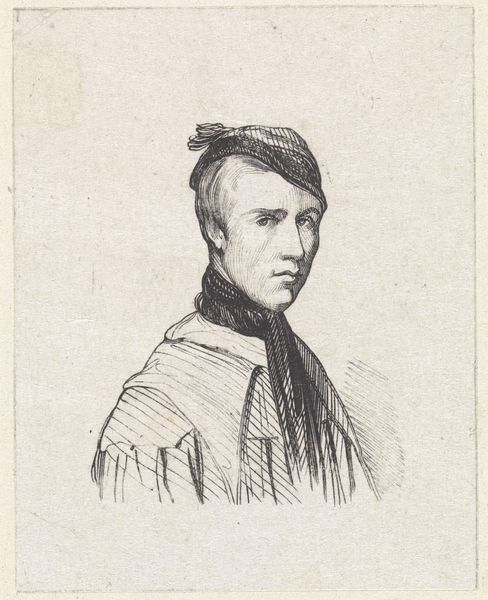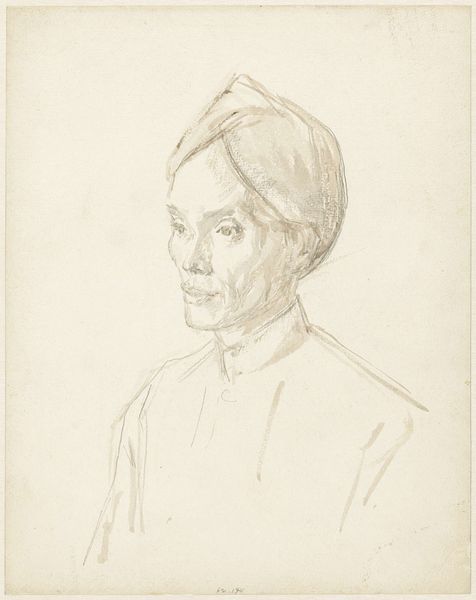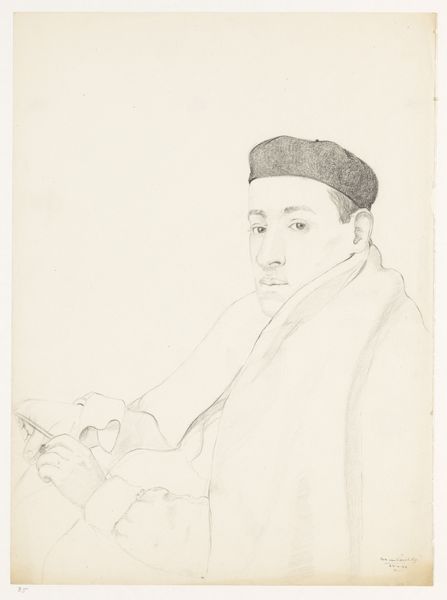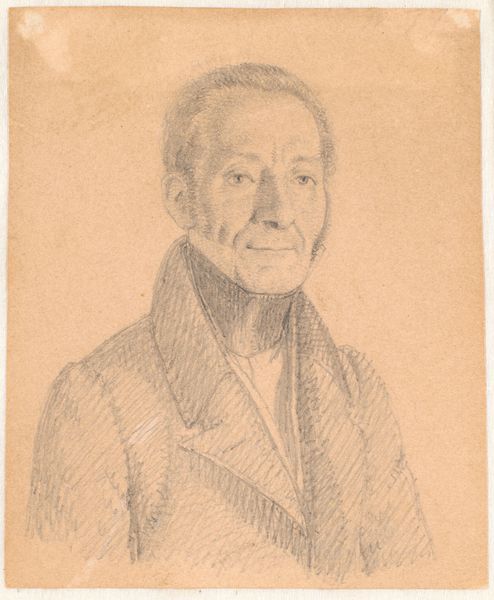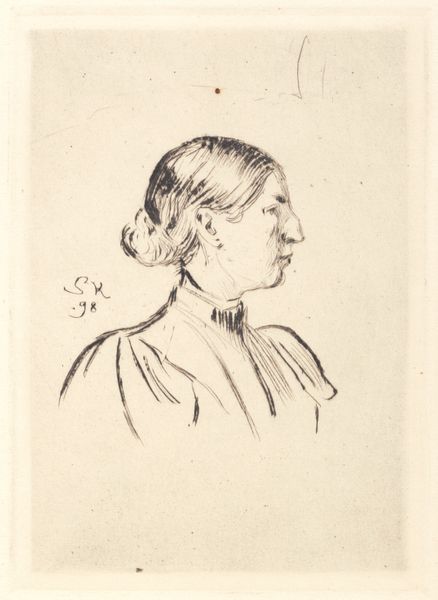
Portret van een Javaanse funcionaris, in een uniform met twee onderscheidingen 1848 - 1854
0:00
0:00
drawing, pencil
#
portrait
#
drawing
#
dutch-golden-age
#
figuration
#
pencil drawing
#
pencil
#
realism
Dimensions: height 321 mm, width 201 mm
Copyright: Rijks Museum: Open Domain
Curator: Our next artwork is a pencil drawing dating from the mid-19th century, specifically between 1848 and 1854. It’s entitled "Portret van een Javaanse functionaris, in een uniform met twee onderscheidingen," or "Portrait of a Javanese Official in Uniform with Two Decorations," and it’s attributed to Christian Heinrich Gottlieb Steuerwald. Editor: There's a certain reserve conveyed here. It is simple, clean. And because it's unfinished in the edges, the eye is directed immediately to the man's gaze and, subsequently, to the intricate patterns in his uniform. Curator: The level of detail achieved with a simple pencil is striking. Notice how the artist delineates status here. The two medals, the ornately decorated uniform… it speaks to the visualized hierarchies within the Dutch East Indies colonial administration at that time. The figure is so self-possessed. It makes one wonder about his position within that structure. Editor: Indeed. The composition seems intentionally structured to assert the sitter's rank. Look at how the uniform's lines frame the face. Also, his headdress, drawn with such care, anchors him within a cultural context, which is juxtaposed against the colonially derived uniform. This cultural meeting is further articulated by the use of European art tools: a simple pencil to create a powerful portrait. Curator: The uniform itself is an interesting case study, isn't it? The official, seemingly Javanese, adopts symbols of colonial power and makes them his own. And what are we, as modern viewers, supposed to make of the power structures inherent in that visual transaction? How can portraiture itself create power structures? Editor: We're compelled to recognize those visual negotiations and deconstruct them to come closer to our understanding of art and colonialism. This is how museums educate. Steuerwald provides the sketch but leaves the interpretations to later generations, mediated by those who care about historical context. Curator: And on the purely aesthetic level, the tonal range is incredible. Consider how the artist captured the subtleties of light and shadow, which adds volume and depth despite the inherent limitations of working only in graphite on paper. The materiality, here, helps achieve realism. Editor: For me, the impact of Steuerwald’s pencil drawing speaks clearly of the artist’s skilled observation in rendering textures. By highlighting the uniform, Steuerwald gives voice to the colonized man that rises above any individual personality and serves as an important historical symbol to decolonize. Curator: A remarkable demonstration of power encoded in clothing. Thank you for bringing that point to my attention.
Comments
No comments
Be the first to comment and join the conversation on the ultimate creative platform.
